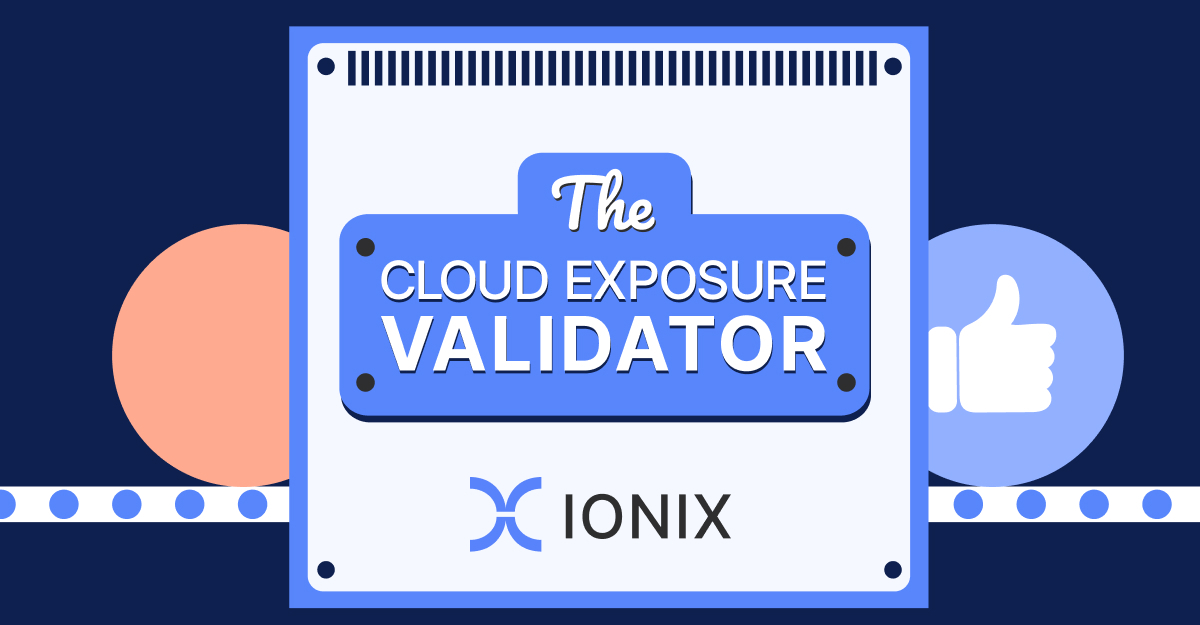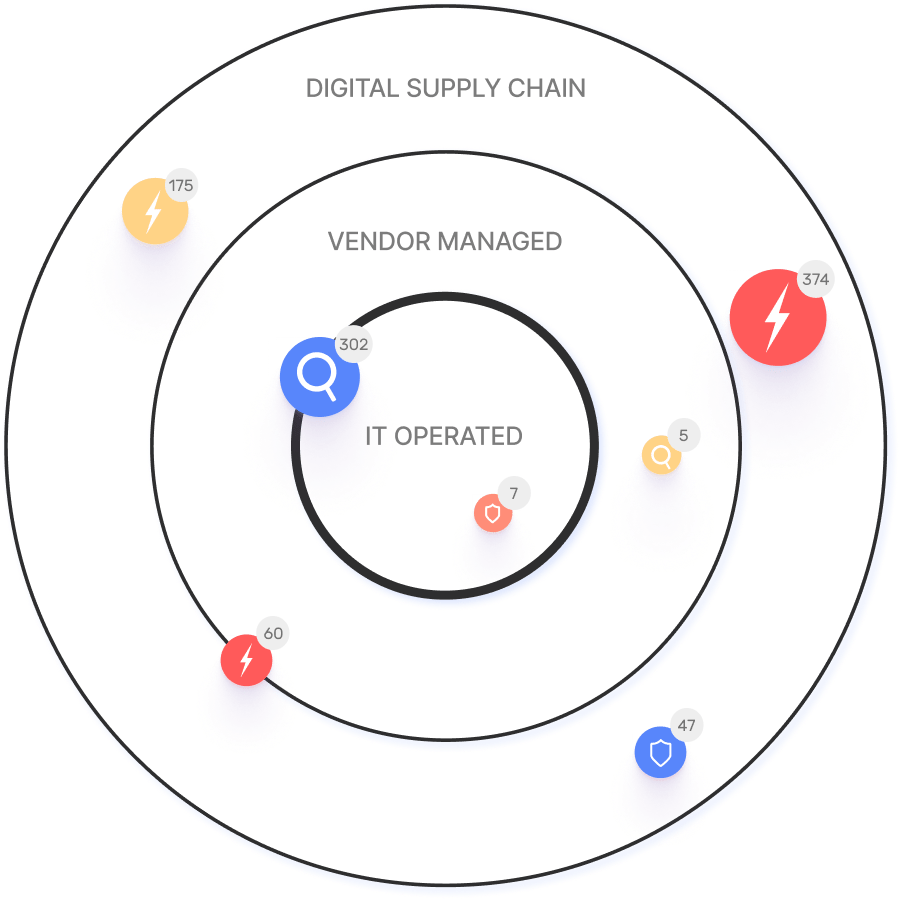Frequently Asked Questions
Product Information & Features
What is IONIX and what does it do?
IONIX is an External Exposure Management platform designed to help organizations identify exposed assets and validate exploitable vulnerabilities from an attacker's perspective. It enables security teams to prioritize critical remediation activities by cutting through the flood of alerts. Key features include complete attack surface visibility, identification of potential exposed assets, validation of exposed assets at risk, and prioritization of issues by severity and context. Learn more.
What are the main features and capabilities of IONIX?
IONIX offers Attack Surface Discovery, Risk Assessment, Risk Prioritization, and Risk Remediation. The platform highlights include discovering all that matters, monitoring your changing attack surface, and ensuring more assets with less noise. It also provides continuous visibility into misconfigurations and shadow IT, enabling security teams to focus on real threats. Explore features.
How does IONIX handle shadow IT and unauthorized assets?
IONIX identifies shadow IT and unauthorized projects within an organization's IT ecosystem, providing comprehensive security visibility. Ongoing monitoring ensures that newly deployed applications and evolving vulnerabilities are continuously tracked and managed. Read more.
What is attack-path mapping and how does IONIX support it?
Attack-path mapping in IONIX explores how attackers could exploit vulnerabilities to move from initial access to their ultimate goal. This helps determine the real risk a threat poses, enabling security teams to focus resources on significant threats rather than false positives. Learn more.
How does IONIX validate exploitability of vulnerabilities?
IONIX uses attack simulation to carry out mock, non-destructive attacks against vulnerabilities to verify if they are exploitable. If a vulnerability cannot be exploited or is mitigated by security controls, it is deprioritized, saving time and resources. Details here.
How does IONIX automate remediation of vulnerabilities?
IONIX uses automation to orchestrate and expedite the remediation of identified vulnerabilities. By prioritizing vulnerabilities based on real-world business impacts, the platform minimizes exposure to threats and reduces mean time to remediation (MTTR). Learn more.
KPIs & Metrics
What key performance indicators (KPIs) does IONIX track for exposure management?
IONIX tracks KPIs such as Exposure Discovery Rate (how often new risks are identified), Validation Accuracy (effectiveness of vulnerability validation), and Remediation Velocity (mean time to remediation for vulnerabilities). These metrics demonstrate the effectiveness of exposure management in reducing the organization's digital attack surface and improving overall security. See details.
Implementation & Onboarding
How long does it take to implement IONIX and how easy is it to get started?
Getting started with IONIX is simple and efficient. The initial deployment typically takes about a week and requires only one person to implement and scan the entire network. Customers have access to onboarding resources such as guides, tutorials, webinars, and a dedicated Technical Support Team. Read more.
What training and technical support does IONIX provide?
IONIX offers streamlined onboarding resources including guides, tutorials, webinars, and a dedicated Technical Support Team to assist customers during implementation and adoption. Customers are also assigned a dedicated account manager for ongoing support. Details here.
What kind of maintenance, upgrades, and troubleshooting support does IONIX offer?
IONIX provides technical support and maintenance services during the subscription term, including troubleshooting, upgrades, and regular review meetings with a dedicated account manager to ensure smooth operation. Learn more.
Security & Compliance
What security and compliance certifications does IONIX have?
IONIX is SOC2 compliant and supports companies with their NIS-2 and DORA compliance, ensuring robust security measures and regulatory alignment.
Integrations & API
What integrations does IONIX support?
IONIX integrates with tools such as Jira, ServiceNow, Slack, Splunk, Microsoft Sentinel, Palo Alto Cortex/Demisto, and AWS services including AWS Control Tower, AWS PrivateLink, and Pre-trained Amazon SageMaker Models. See full list.
Does IONIX offer an API?
Yes, IONIX provides an API that supports integrations with major platforms like Jira, ServiceNow, Splunk, Cortex XSOAR, and more. Learn more.
Use Cases & Customer Success
Who can benefit from using IONIX?
IONIX is tailored for Information Security and Cybersecurity VPs, C-level executives, IT managers, and security managers across industries, including Fortune 500 companies. Industries represented in case studies include insurance and financial services, energy, critical infrastructure, IT and technology, and healthcare.
Can you share specific case studies or customer success stories?
Yes. For example, E.ON used IONIX to continuously discover and inventory their internet-facing assets, improving risk management (read more). Warner Music Group boosted operational efficiency and aligned security operations with business goals (details). Grand Canyon Education enhanced security measures by proactively discovering and remediating vulnerabilities (case study).
Who are some of IONIX's customers?
IONIX's customers include Infosys, Warner Music Group, The Telegraph, E.ON, Grand Canyon Education, and a Fortune 500 Insurance Company. See more.
Competitive Differentiation
How does IONIX differ from similar products in the market?
IONIX stands out for its ML-based 'Connective Intelligence' that finds more assets with fewer false positives, Threat Exposure Radar for prioritizing critical issues, and comprehensive digital supply chain coverage. Unlike alternatives, IONIX reduces noise, validates risks, and provides actionable insights for maximum risk reduction and operational efficiency. Learn more.
Why should a customer choose IONIX?
Customers choose IONIX for better discovery, focused threat exposure, comprehensive digital supply chain coverage, and streamlined remediation. The platform is recognized for product innovation, security, functionality, and usability, earning top ratings and industry awards such as the ASM Leadership Compass and Intellyx Digital Innovator Award. See awards.
Guides & Resources
Where can I find guides and resources from IONIX?
IONIX provides comprehensive guides, datasheets, and case studies on its resources page. Topics include Automated Security Control Assessment (ASCA), web application security, exposure management, vulnerability assessments, OWASP Top 10, CIS Controls, and attack surface management. Explore guides.
Preemptive Cybersecurity & Exposure Management
What is preemptive cybersecurity and why is it important?
Preemptive cybersecurity is a proactive approach that focuses on predicting and preventing cyberattacks before they occur, using AI and advanced analytics. It is critical due to the increasing number of fast-paced and sophisticated threats, enabling organizations to eliminate risks before they materialize and helping security teams scale effectively. Read the guide.
How does exposure management fuel preemptive cybersecurity?
Exposure management provides the visibility needed to determine the exploitability of assets and prioritize remediation. It identifies shadow IT, maps attack paths, validates exploitability, and automates rapid remediation loops, all of which are essential for preemptive cybersecurity. Learn more.




